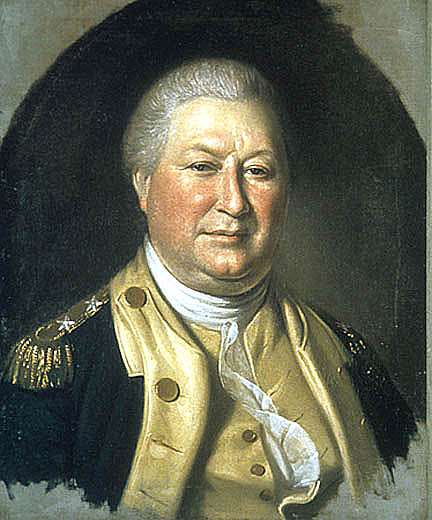
 |
|||||||||||
| WILLIAM SMALLWOOD 1732-1792 by Charles Willson Peale, from life, 1781-1782 Oil on canvas. H 24, W 20 in (H 61, W 50.8 cm) Independence NHP INDE 14148
|
|||||||||||
|
About this Portrait:
Charles Willson Peale painted his museum portrait of Smallwood in the early 1780s. Smallwood wears his uniform of major general (the rank he received in recognition for his service at the Battle of Camden). Peale considered this portrait among my best works of that day, and nearly 40 years later said the portrait I have of Gen. Smallwood is a faithful and expressive likeness of him. The painting first appears on the October 13, 1784 list published in the Freeman's Journal and Philadelphia Daily Advertiser. In addition to the museum portrait of Smallwood, Peale repainted his brother James's miniature of the subject (now at the Philadelphia Museum of Art) in 1788 and copied the museum portrait for the Maryland State House in Annapolis in 1823. Earlier, Peale's son, Rembrandt, had copied the museum portrait for use in Peale's Baltimore Museum (now owned by the Baltimore Museum of Art) c. 1805.
Ownership History:
Listed in the 1795 Peale Museum catalog. Purchased by the City of Philadelphia at the 1854 Peale Museum sale. |
|||||||||||
|
|
||
|
Note: Prev/next are in alphabetic order within their respective theaters. |
||
Last Modified: